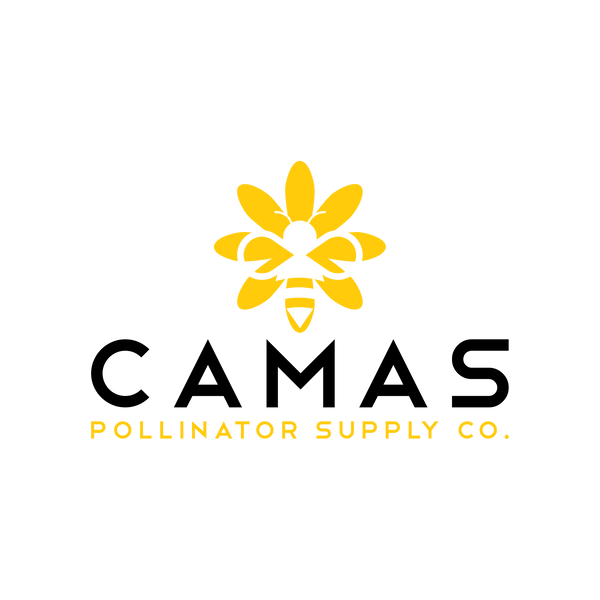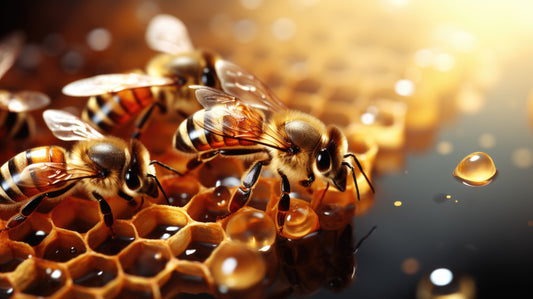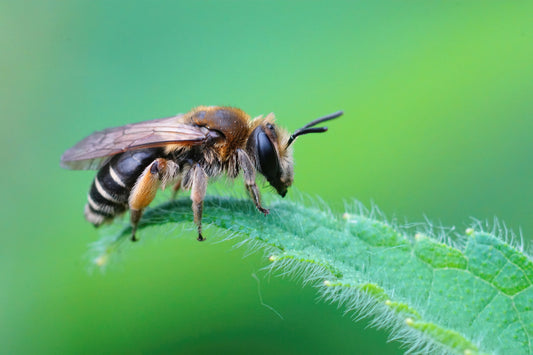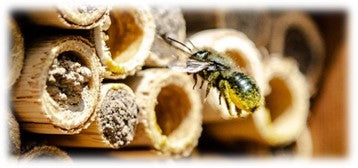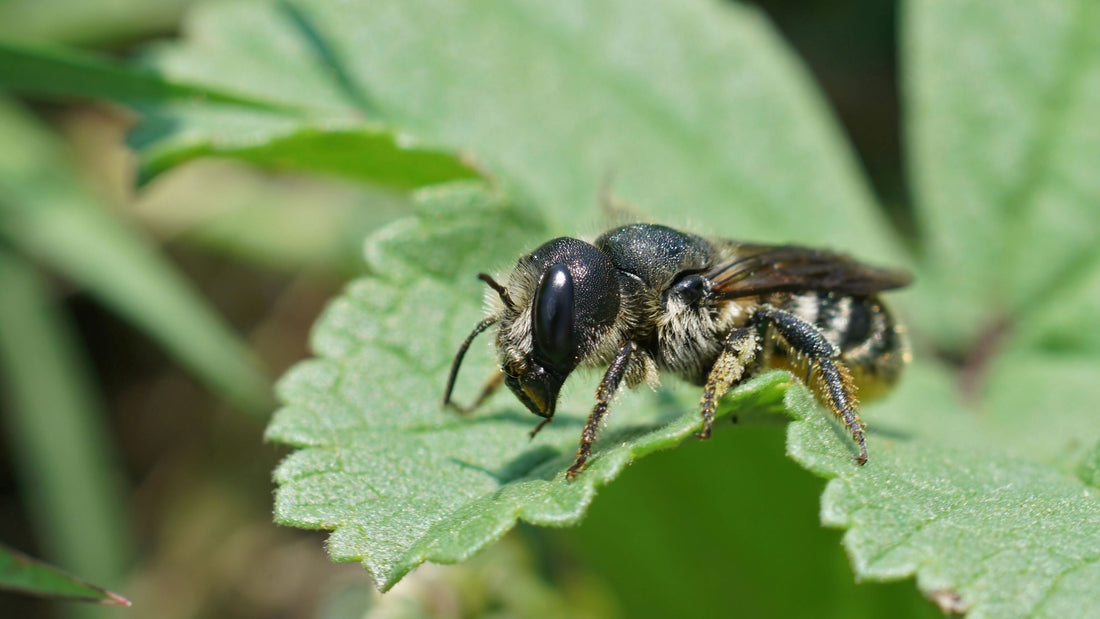Everything you need to know to attract, support, and multiply your mason bee population

Your mason bee house arrives, and you're eager to start supporting these gentle, efficient pollinators. But where exactly should you place it? When should you expect activity? And what about that mysterious "harvest" process everyone mentions?
Mason bees are among the most effective pollinators you can attract to your garden—up to 100 times more efficient than honeybees for fruit tree pollination. Unlike honeybees, these solitary bees don't swarm, rarely sting, and work in cool weather when other pollinators stay dormant. Setting up their housing correctly makes the difference between a thriving colony and an empty bee house.
Choosing the Perfect Location
Morning sun exposure is crucial for mason bee house success. These bees need warmth to become active, so place your house where it receives direct sunlight from sunrise until at least 10 AM. East or southeast-facing locations work best.
Height and stability matter more than you might expect. Mount your bee house 4-6 feet off the ground on a sturdy post or wall. Avoid locations that sway in the wind—mason bees prefer stable nesting sites and may abandon wobbly houses.

Protection from elements extends the life of both your house and the developing bees. A small roof or overhang prevents rain from entering nesting holes while still allowing easy bee access.
The Critical Timing Factor
Early spring placement aligns with mason bee emergence patterns. In most regions, this means late February to early March, when daytime temperatures consistently reach 55°F. Placing houses too late means missing the primary nesting season.
-Regional variation affects timing significantly:
-Zones 6-7: Install by mid-March
-Zones 8-9: Install by late February
-Zones 4-5: Install by early April
Watch for the first native tree blossoms in your area—this signals optimal mason bee house installation timing.
What to Expect in Year One
Initial activity often appears modest in the first season. Mason bees must discover your house, and populations build gradually. Seeing 10-20% of holes filled in year one indicates success.
Female mason bees work methodically, filling one hole completely before starting the next. Each hole becomes a linear nursery containing 5-8 individual bee chambers separated by mud walls. This process takes 2-3 days per hole.
Male bees emerge first in spring, followed by females about a week later. Males don't participate in nest building but are essential for mating. Don't worry if you see bees hovering around the house without entering—this is normal courting behavior.
The Harvest Process Explained
Why harvest matters: Mason bee cocoons benefit from removal and cleaning each fall. This process removes parasites, allows you to store cocoons safely through winter, and lets you clean reusable nesting materials.
When to harvest: Wait until late October or November, ensuring all development is complete. Cocoons should feel firm when gently pressed.
The harvest steps:
- Remove nesting tubes from your bee house
- Carefully split paper tubes or slide out the bamboo contents
- Separate cocoons from debris and parasites
- Store healthy cocoons in ventilated containers in your refrigerator
- Clean and replace nesting materials
Maximizing Your Success
Mud source availability within 25 feet of your bee house significantly increases occupancy rates. Mason bees need clay-rich mud to build chamber walls. If natural sources aren't available, create a mud puddle using clay soil mixed with water.

Diverse hole sizes accommodate different mason bee species. While 8mm holes work for most species, including 6mm and 10mm holes, expands the range of bees your house can support.
Multiple houses placed 50-100 feet apart can support larger populations without creating competition. Start with one house and expand based on occupancy rates.
Troubleshooting Common Issues
No activity after six weeks? Check these factors:
- Is the morning sun reaching the house?
- Are there adequate flowers within 300 feet?
- Is a mud source available nearby?
- Did you install at the right time for your region?
- Holes filled, but no emergence the following spring? This often indicates:
- Parasitic wasps or other pests
- Insufficient winter protection
- Nesting materials left too long without cleaning
Beyond the Basics: Advanced Management
Cocoon counting helps track population growth. Healthy mason bee populations can double annually under optimal conditions. Keep records of hole occupancy and cocoon numbers to monitor your success.
Disease prevention becomes important as populations grow. Annual harvesting and tube replacement prevent the buildup of pathogens that can devastate bee populations.
Expansion timing should follow natural population growth. Plan to add housing capacity when existing houses show 70% or higher occupancy rates.
The Long-Term Rewards
Properly managed mason bee houses can support thriving populations for decades. Many beekeepers report 80-90% hole occupancy rates by year three, with hundreds of bees emerging each spring. Beyond the satisfaction of supporting native pollinators, you'll notice dramatically improved fruit set on trees and enhanced productivity in vegetable gardens.
Your garden becomes a mason bee multiplication site, contributing to regional pollinator populations and supporting broader ecosystem health. Each bee house represents a small but significant conservation action that creates benefits far beyond your property boundaries.

Start with proper setup, maintain consistent management practices, and watch as your garden transforms into a pollinator paradise that supports both wildlife and abundant harvests.
Are you just getting started with pollinator gardening or mason bee houses? We've created a comprehensive Free Solitary Bee Guide that walks you through everything you need to know—from selecting the right native plants to setting up your first mason bee house for maximum success.
This step-by-step guide includes:
- Regional plant selection charts
- Mason bee house placement templates
- Monthly maintenance checklists
- Troubleshooting solutions for common problems
Get your free copy now here!
Don't let another season pass without supporting these incredible pollinators. Download your guide today and start building the thriving ecosystem your garden and local wildlife deserve!
Looking for quality mason bee houses, native plant seeds, or pollinator garden supplies? We support gardeners like you with curated resources—check out our Amazon store for everything you need to create a thriving pollinator habitat.
